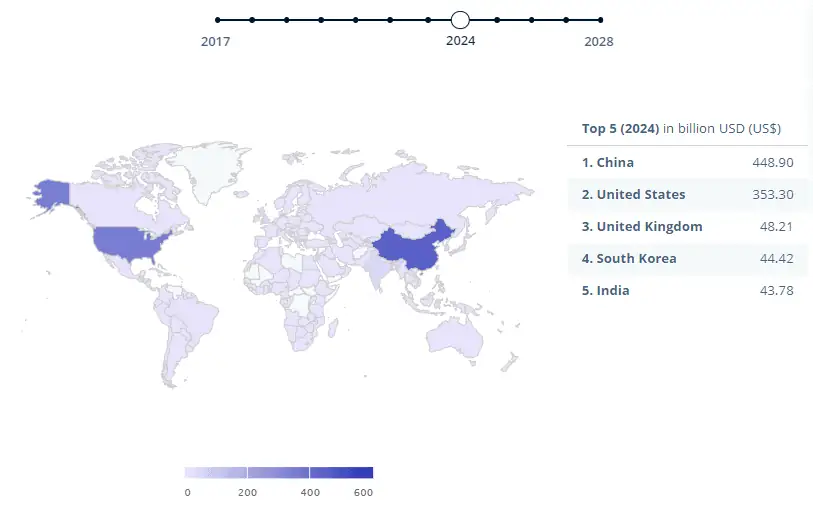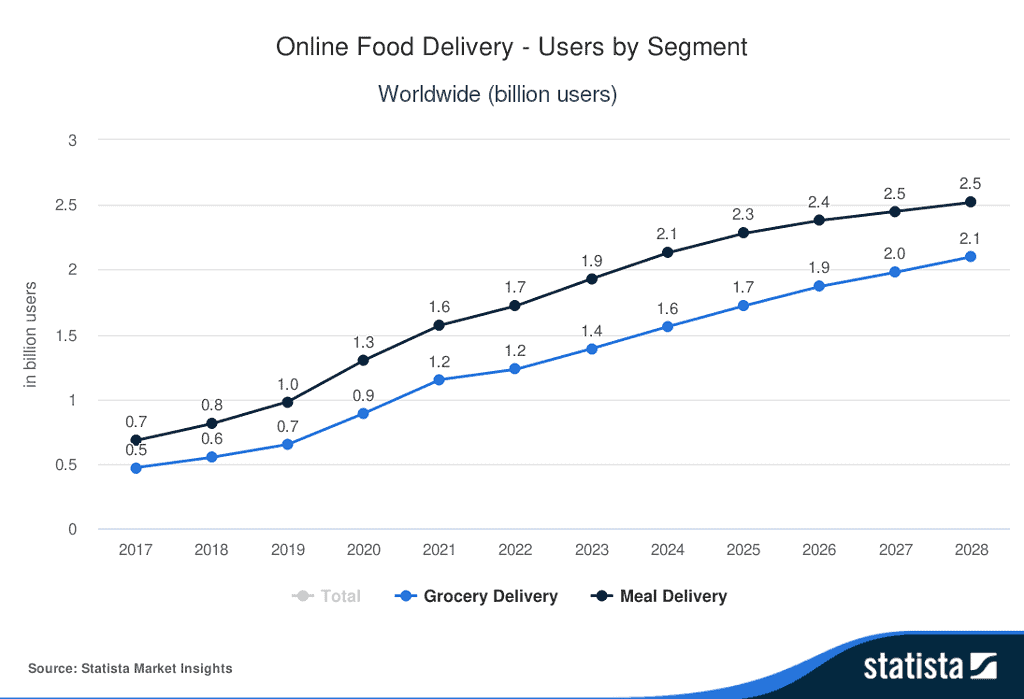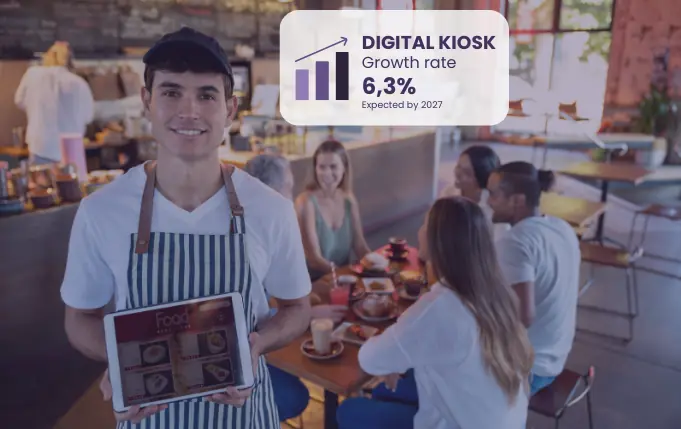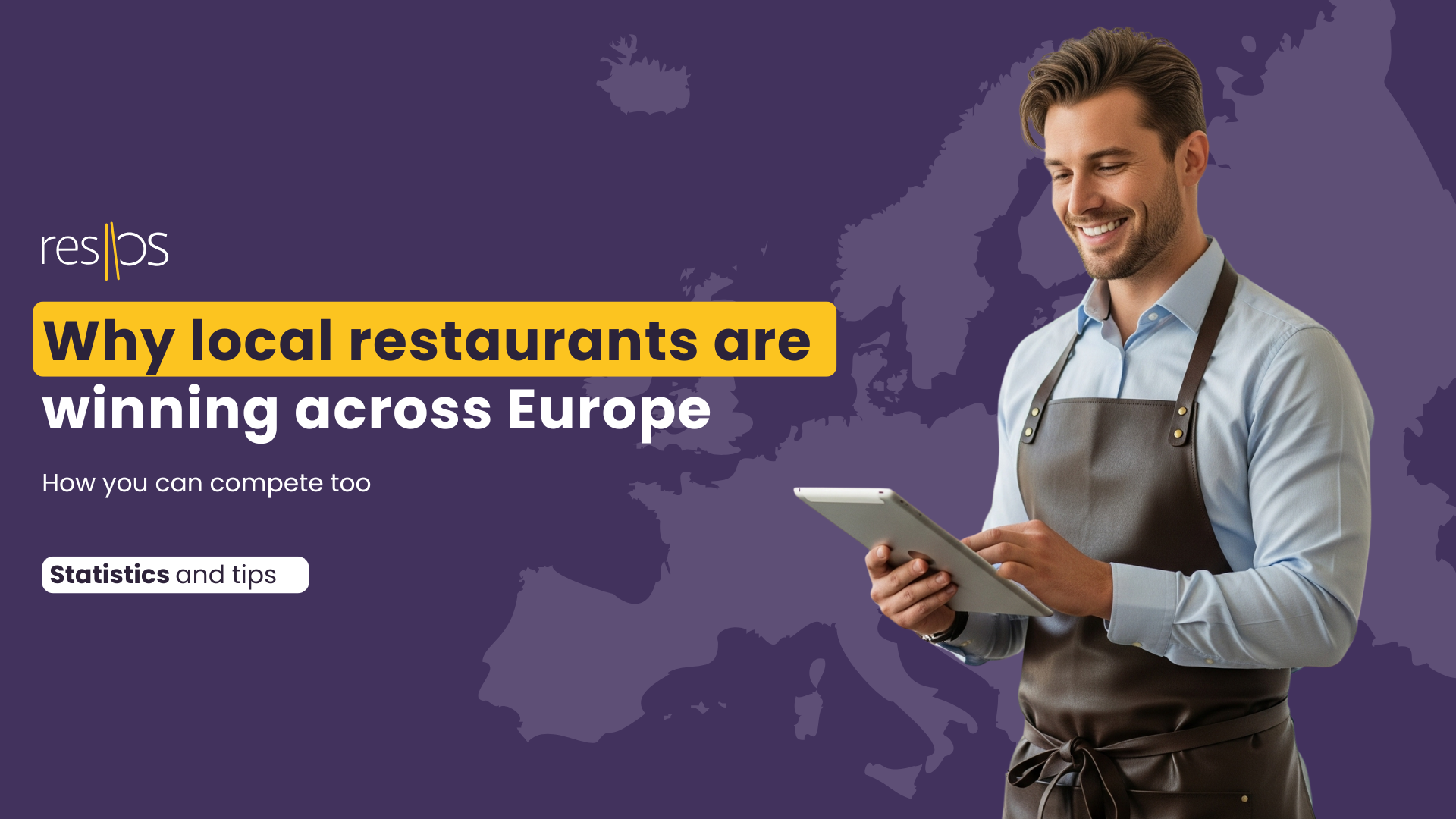The restaurant industry has been undergoing a significant transformation, propelled by advancements in technology and shifts in consumer behavior. Digitalization is no longer just an option but a critical factor in the survival and growth of restaurants 🌍 worldwide.
Key takeaways:
Takeaway delivery technology: Exploring the rise of online food delivery
Touchscreen menus and kiosks: Revolutionizing quick service restaurants
Data-driven dining: Harnessing technology for efficient operations
Digital customer insights: Personalizing the dining experience through data
Takeaway — delivery technology
The restaurant industry is undergoing a transformation, with digitalization at the forefront. As consumer preferences shift and technology advances, the global online food delivery market is experiencing unprecedented growth.
At resOS, we offer a complimentary takeaway system, enabling restaurants to efficiently manage and streamline their takeaway operations. Take advantage of our user-friendly platform to keep pace with technology in the restaurant industry and enhance efficiency for your team.
The global picture
Globally, China is expected to generate the highest revenue in the Online Food Delivery market, amounting to US$448.90bn in 2024. This is indicative of the country’s large consumer base and advanced delivery infrastructure. In comparison, countries like the United States also play a significant role in the global market, driven by a robust delivery ecosystem and high consumer demand.

Restaurant delivery — A growing user base
The Meal Delivery market is on an impressive growth path, with the number of users expected to reach 2.5bn by 2028. The user penetration is also set to be around 27.5% in 2024, reflecting the increasing reliance on meal delivery services for daily sustenance.

Touchscreen menus and kiosks
Touchscreen kiosks are revolutionizing the quick service restaurant (QSR) industry, offering self-ordering, payment, and entertainment options. Interactive kiosks provide quicker resolution to client challenges, leading to increased satisfaction. With a projected growth rate of 6.3% to reach $39.1 billion by 2027 (statistics from mvix.com), these kiosks are becoming a staple in various sectors.

Businesses leveraging these technologies enjoy reduced wait times, enhanced marketing opportunities, and increased sales through upselling and cross-selling. As more industries recognize their benefits, the adoption of touchscreen kiosks is expected to continue rising, enhancing customer service and operational efficiency across the board.
Data-driven dining
The restaurant industry is embracing data-driven dining, as discussed in the Harvard Business Reviews, How Data-Driven Decisions Help Restaurants Stay Competitive. By leveraging technology and analytics, restaurants optimize inventory, reduce waste, and tailor services to meet changing customer preferences.
This shift to a data-centric approach enhances operational efficiency and the dining experience, positioning data as a key element in culinary innovation and competitive strategy.
At resOS, our analytics tracking app aligns with the restaurant industry’s data-driven shift, leading to operational efficiency and an enhanced dining experience. This positions data as a key element in culinary innovation and competitive strategy.

Digital customer insights
Digital loyalty programs provide restaurant owners with valuable customer insights, allowing them to track purchasing habits, preferences, and the frequency of visits. This data enables owners to personalize offers, improve customer experiences, and make informed decisions on menu changes or promotional strategies. Ultimately fostering a stronger customer relationship and increased loyalty.
Loyalty programs are reshaping customer engagement in the restaurant industry, with 57% of establishments adopting these schemes, significantly affecting consumer habits (Insider Intelligence).
Members visit and spend 20% more than non-members, and 41% of consumers say these programs sway their dining decisions. Remarkably, 73% would recommend a restaurant with a strong loyalty program, illustrating its power in driving revenue and brand advocacy (OnlineDasher).
The digitalization of the restaurant industry is more than a fleeting trend; it’s a substantial shift in consumer behavior and business operations. With significant revenue forecasts and user growth, the online food delivery market is at the forefront of this revolution.
As technology continues to evolve, so will the ways we experience dining, shaping a future where digital and culinary experiences intertwine more seamlessly than ever before.



